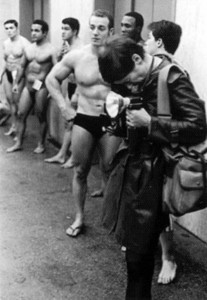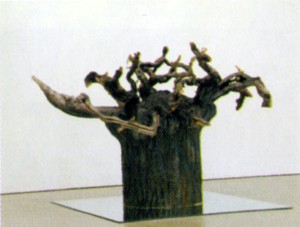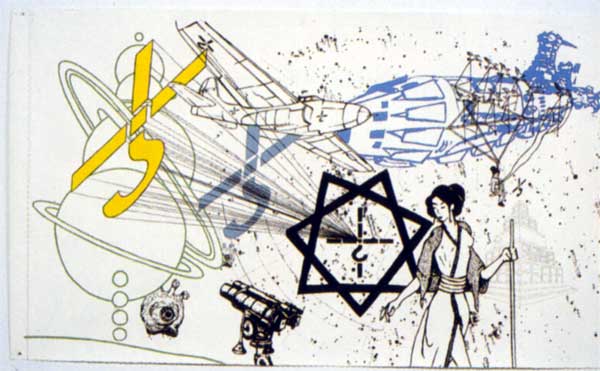For ‘Flash Art’ Magazine

Like good art, a well-curated exhibition makes some suggestions and then allows viewers to draw their own conclusions. The selections in this 35-artist, intergenerational show were sometimes idiosyncratic but never dull. The earliest artwork was Gene Beery’s 1961 painting reading ‘Sorry, this painting is temporarily out of style – closed for updating…” Located in the reception area, it set the tone for a show that makes thoughtful comparisons between art by established and emerging artists without chasing the fashion of the day.
John Miller’s eerie mannequin also subverted fashion and, positioned near the gallery windows, attracted attention from the street. Its physical presence was echoed in Sam Samore’s two-way mirror piece composed of the “room, viewers, interiority, exteriority, etc.” Mirroring was everywhere, with a mirror in the shape of a Rorschach by Kelley Walker, tree roots on a mirror by Sam Durant and a Roy Lichtenstein mirror painting.

The only color photography came in the form of orchids by Sherrie Levine and a sandcastle photographed by Wolfgang Tillmans, while black and white photojournalism by Diane Arbus, William Gedney, and Peter Hujar took center stage. A mysterious nighttime view of a Disneyland castle by Arbus contrasted with Tillmans’ beach scene, and a photo of a body builder by Arbus was complimented by Gedney’s picture of Arbus taking these shots.
Seven large paintings, hung salon style on the back wall of the gallery’s cavernous space, were a visual highlight of the show. What at first looked like one of John Tremblay’s frisky abstract paintings turned out to be a yellow and black Infinite Dot painting by Yayoi Kusama, while a Trembly in muted tones hung above. Next to these, an enormous date painting by On Kawara contrasted the open-ended possibility of the Kusama and Tremblay with its blunt statement of a single date.
It’s not always evident what curator Bob Nickas was intending by his eclectic mix. He admits that he curates “…as if free-association was an accepted curatorial/art historical tool,” explaining, for example, that Sherrie Levine appears because she is foundational to contemporary art in general. Lisa Ruyter’s day-glo jets are included because she invigorates her painting by working from her photographs rather than her having any specific aesthetic affiliation to the art on the walls around her. But as an exploration “from the observatory” into the deep space of contemporary art, Nickas provides enough connections to suggest a bigger picture, while still keeping us gazing with curiosity.
